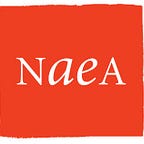Viewfinder Issue 5 -- Centering Marginalized Voices: Letter from the Editors
Sara Egan, Keonna Hendrick, and Kabir Singh, Viewfinder Editorial Board
In the first issue in a series about social justice in museum education, we examine three examples of how museum educators and artists unpack social injustices through centering voices and experiences of people of color in museum discussions.
In the context of museum education, social justice work can be defined as activities that promote an equitable distribution of privilege, opportunity, and access both within and beyond the museum. From public programs to inquiry-based discussions, the contributing authors explore approaches to activating the museums as a platform for critical inclusion to address systemic inequities. In doing so, they build on constructivist understandings of meaning making by embracing the cultural knowledge of visitors and the power of participatory learning to expand cultural perceptions, encourage critical thinking and build relationships.
Kayleigh Bryant-Greenwell reflects on how the National Museum of African American History and Culture’s participatory program, A Seat at the Table, aims to counter White dominant narratives by making space for strangers to engage in discussion centered on issues-concerned marginalized communities. Bryant-Greenwell posits that participatory practice allows for museums to redefine their public value with consideration of community engagement and responsiveness.
Artists Maia Chao and Josephine Devanbu, and researcher Bryn Pernot, explore the intersections of race, class, and gender by asking, “What does an art museum look and feel like to someone who wouldn’t normally visit one?” Their case study focuses on the Look at Art. Get Paid. (LAAGP) program at Rhode Island School of Design Museum, which invites people who rarely visit museums to serve as guest critics and receive a stipend.
Michelle Antonisse introduces the societal frame as a pedagogical tool to facilitate art-centered conversations on controversial issues such as racism. The article examines how Antonisse and her colleagues at The Museum of Contemporary Art, Los Angeles, apply the tools when responding to stereotypes and discriminatory language during discussions of Kerry James Marshall’s work.
Each author offers examples of programs that start with needs, interests, biases and assumptions, political and daily realities of visitors, rather than exhibitions. Their reflective writing demonstrates the importance of active listening to social justice work in museums. In doing so, these authors trust audiences to bring their ideas and create brave spaces for museum visitors and educators to distance themselves from the façade of neutrality. As we consider these examples, we are reminded that museums can be active spaces for engaging in challenging conversations that dismiss stereotypes and center marginalized identities. While disagreement may occur, museum educators should be prepared for uncomfortable conversations if they are to build brave spaces for discussion and understanding.
— The Viewfinder Editorial Board
Sara Egan
Sara Egan is a museum educator whose work is grounded in constructivism and the use of discussions about works of art to affirm all voices. She connects Boston students and teachers with the Isabella Stewart Gardner Museum as School and Youth Programs Manager. Sara holds a BA from Vassar College and an Ed.M. from the Harvard Graduate School of Education, and is an adjunct professor of art at Simmons College.
Keonna Hendrick
Keonna Hendrick is a cultural strategist whose teaching, writing, and strategic planning promote critical thinking, expand cultural perceptions, and support self-actualization. She currently serves as School Programs Manager at the Brooklyn Museum, where she leads a department of skilled and empathetic educators in designing learning experiences that invite learners to expand their understanding of themselves and the world. Her writing has appeared in numerous publications including the Journal of Museum Education (2017), Multiculturalism in Art Museums Today (2014) and the Journal of Folklore and Education (2016). As the co-creator of multicultural critical reflective practice, a professional development model, Keonna continues to provide professional development to educators in museums and classrooms nationally, including ArtsConnection, The Museum of Modern Art, Whitney Museum of American Art, National Art Education Association, and The Solomon R. Guggenheim Museum
Kabir Singh
Kabir Singh is Associate Educator, Family Programs at the Skirball Cultural Center, where he develops and teaches programs for intergenerational audiences. He is a writer and Los Angeles native and has been teaching in museums since 2008. Kabir is dedicated to making museums more inclusive, accessible, and welcoming. He serves as the National Art Education Association (NAEA) Museum Education Division Pacific Regional Representative-Elect and has previously served on the board of Museum Educators of Southern California (MESC). Kabir holds an EdM in Arts in Education from the Harvard Graduate School of Education and a BA in Art History from Columbia University.
